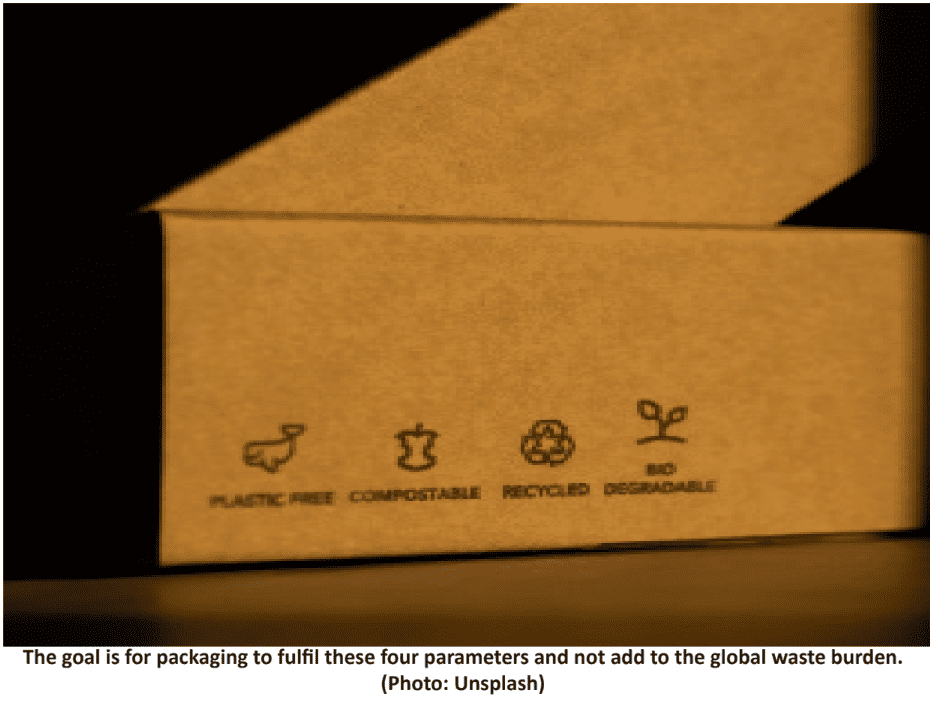
There’s one industry that occupies a significant place in the Indian economy, but it’s not associated with a product or service we usually think of buying. However, it is still a part of the many transactions we make, be it during a grocery store run, or while ordering a cup of coffee at a cafe. This is the packaging industry. With its ubiquitous presence in our lives, we are surrounded at all times by products that have been packaged in some way or the other. And with the COVID-19 pandemic leading to greater usage of disposable medical equipment as well as increased online shopping of all types of consumer goods, the use of packaging has only increased. While this bodes well for the industry, it may not be so for the environment. Packaging is primarily derived from synthetic materials such as plastic and styrofoam, while cartons are made out of paper, which relies on wood and the processing of trees. India’s paper and packaging industry is the 5th largest sector in the Indian economy, meaning that it’s an industry with great potential. According to the Plastindia Foundation, the estimated annual plastic consumption is 16.5 million tonnes, of which half the items are single-use plastics, most commonly used in packaging. India’s current situation when it comes to packaging, relatively speaking, might not be as bad as other countries from an environmental standpoint. The current consumption of polymers in India is 9.7 kg per capita, compared to the global average of 28 kg. While this is something that industry-focused outlets point out to be India’s untapped potential, it is also a good thing that India’s consumption of synthetics is on the lower side, boding well for the environment. The country is also attempting to take a more eco-friendly approach, by implementing a ban on single-use plastics in three phases, starting from July 2022. However, it will be a long time before the plastics that come under this ban catch up to most packaging materials, as only small plastic bags and other small items are part of the ban under Phase 1. As a compromise, the Environment Ministry is pushing for the use of Extended Producer Responsibility, which will allow plastic items that are not under this ban to be recycled and reused by their producer, thus returning plastics to their source. The packaging industry in India right now seems to signal economic growth and job creation. However, while the country has elaborate plans for the reduction of plastic packaging, it has a poor track record in terms of implementation and ensuring that systems are in place to effect these changes, as seen with the lukewarm response to Plastic Waste (Management & Handling) Rules, 2011. It remains to be seen as to how the industry will change once the plastics ban rolls into place – is the industry on the cusp of a massive change, or will the new rules go unnoticed and un-implemented by those favouring stability of the packaging industry and continuation of past practices?
10 May 2022
Shruti Menon